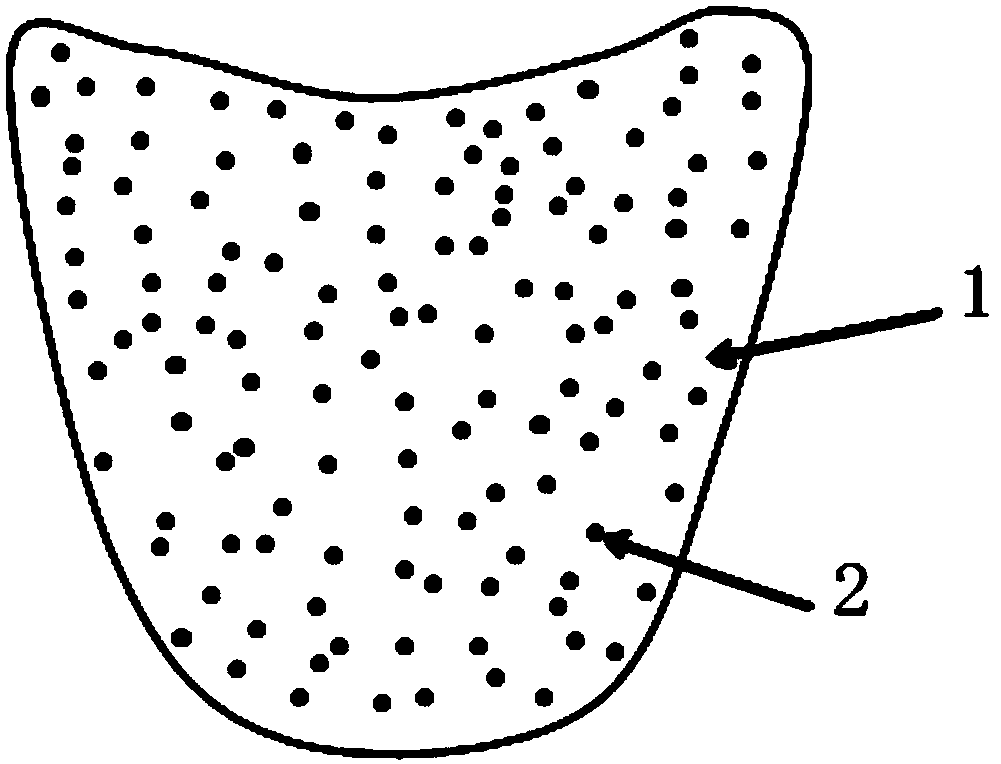Method for manufacturing dentures from polyetheretherketone/zirconium oxide composite materials
A composite material, polyether ether ketone technology, applied in medical science, tissue regeneration, prosthesis, etc., can solve the problems of natural tooth wear and polishing difficulty, and achieve the effect of increasing lifespan, reducing wear and high density
- Summary
- Abstract
- Description
- Claims
- Application Information
AI Technical Summary
Problems solved by technology
Method used
Image
Examples
Embodiment 1
[0026] The polyether ether ketone / zirconia composite material with zirconia mass proportion of 1% is put into a twin-screw extruder to extrude the composite material wire at 360°C, and then the obtained wire is sheared and pulverized into granules. Use mimics software to perform 3D reconstruction of CT data, 3-matic software to make corresponding injection molds for the stl model, import the stl model into the Cura slicing software to set slice layer thickness, exposure time of each layer and other parameters, and add support if necessary . Finally, import the slice file into the 3D printer to print out an injection mold that can withstand high temperatures of 450°C. Put the obtained granular composite material into the silo of the injection molding machine, install and fix the obtained injection mold, and perform injection molding at an injection temperature of 380°C and a mold temperature of 120°C. The resulting injection-molded dentures were polished with special dental eq...
Embodiment 2
[0028] The polyether ether ketone / zirconia composite material with a mass ratio of zirconia of 10% was put into a twin-screw extruder to extrude composite material filaments at 370° C., and then the obtained filaments were sheared and pulverized into granules. Use mimics software to perform 3D reconstruction of CT data, 3-matic software to make corresponding injection molds for the stl model, import the stl model into the Cura slicing software to set slice layer thickness, exposure time of each layer and other parameters, and add support if necessary . Finally, import the slice file into the 3D printer to print out an injection mold that can withstand high temperatures of 450°C. Put the obtained granular composite material into the silo of the injection molding machine, install and fix the obtained injection mold, and perform injection molding at an injection temperature of 410° C. and a mold temperature of 250° C. The resulting injection-molded dentures were polished with sp...
Embodiment 3
[0030] The polyetheretherketone / zirconia composite material with a mass ratio of zirconia of 3% was put into a twin-screw extruder to extrude the composite material wire at 365°C, and then the obtained wire was sheared and pulverized into granules. Use mimics software to perform 3D reconstruction of CT data, 3-matic software to make corresponding injection molds for the stl model, import the stl model into the Cura slicing software to set slice layer thickness, exposure time of each layer and other parameters, and add support if necessary . Finally, import the slice file into the 3D printer to print out an injection mold that can withstand high temperatures of 450°C. Put the obtained granular composite material into the silo of the injection molding machine, install and fix the obtained injection mold, and perform injection molding at an injection temperature of 390°C and a mold temperature of 180°C. The resulting injection-molded dentures were polished with special dental eq...
PUM
 Login to View More
Login to View More Abstract
Description
Claims
Application Information
 Login to View More
Login to View More - R&D
- Intellectual Property
- Life Sciences
- Materials
- Tech Scout
- Unparalleled Data Quality
- Higher Quality Content
- 60% Fewer Hallucinations
Browse by: Latest US Patents, China's latest patents, Technical Efficacy Thesaurus, Application Domain, Technology Topic, Popular Technical Reports.
© 2025 PatSnap. All rights reserved.Legal|Privacy policy|Modern Slavery Act Transparency Statement|Sitemap|About US| Contact US: help@patsnap.com

